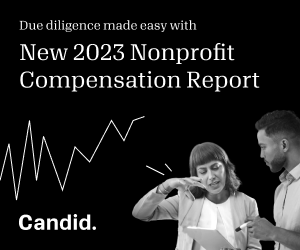How to trust: When funders and grantees get it right

Trust-based philanthropy has gotten a lot of attention in recent years, especially during (and coming out of) the COVID-19 pandemic. At the height of the pandemic, many institutional funders and individual philanthropists rallied around the cause of trust-based philanthropy and infused large amounts of unrestricted dollars into their nonprofit partners to keep them afloat through an unprecedentedly challenging period.
A paradigmatic example and champion of trust-based philanthropy is the philanthropic giving of billionaire MacKenzie Scott. The fifth wealthiest woman in the United States, Scott reportedly has given away at least $14 billion of her estimated $26 billion net worth. What’s more, she has done so with virtually no strings attached. No year-end reports, no measurement or evaluation of programmatic impact required. Nothing. “We trust you fully to do what you do best,” Scott seems to be saying to her more than 1,600 grantees.
Proponents of trust-based philanthropy often point out that the value of unrestricted giving lies in allowing grantees to build capacity and develop long-term plans. Indeed, according to the Center for Effective Philanthropy, unrestricted, multiyear giving has profoundly positive effects on recipients. It helps nonprofit organizations think big, be thoughtful and planful, and invest in long-term organizational sustainability.
But following a strictly trust-based paradigm may pose challenges for foundations with guidelines and guardrails around their grantmaking, who must make hard choices about where, how much, and with whom to invest—in other words, whom to trust—in order to drive long-term impact. Many grantmakers are also inherently accountable to their boards, the communities in which they invest, and other supporters, whether donors (in the case of foundations or grantmaking public charities) or taxpayers (in the case of governmental agencies). And so, they have to make choices that will uphold the trust of their various constituents and stakeholders.
When choosing which causes and which organizations to support, grantmakers must ask: “Will this grant advance the kind of change we want to make in the world?” “Given limited resources, which grant is more likely to advance our goals?” And when renewal decisions are discussed, it’s critical to also ask, “Did it work?”
And this is where trust truly comes into play. We all know that trust is a good thing; it is the glue that holds together any relationship. We also know that trust can be hard to establish. When you trust, you must give away a certain degree of control; you have to share your power with someone else. What makes a funder-grantee relationship tricky is that it is so unbalanced; the power lies almost entirely on the funder’s side. The funder alone has the power of the purse strings, and many grantees will happily (or begrudgingly) jump through almost any hoop to secure a grant.
The fact that grantees will do what it takes to make a funder happy is not a good thing. It’s not good because it makes it difficult for funders to interpret grantee reports. (Is that the truth, or is that the truth they want us to hear?) It’s not good because it makes it difficult for grantees to fruitfully hear less-than-stellar evaluation findings, and to engage in meaningful conversation with funders about necessary adjustments.
As evaluators, we situate ourselves (and offer value) right at the nexus of grantees and their funders. We see these relationships unfold day in and day out. And we know that some relationships work better than others.
Having worked with and served numerous philanthropic and nonprofit organizations over years, we have learned that there are some predictable components to fruitful, trust-based funder-grantee relationships.
Consider the following when establishing a trust-based practice that works for you:
1. Trust always goes both ways; however, in a funding relationship, the imperative to trust falls primarily on the funder’s side of the court. You, the funder, have the power; and so, you have the responsibility to convey your trust in words and deeds (and dollars).
2. Offer a long enough runway. Anyone who’s been in the philanthropic or nonprofit sector for more than a brief period knows that change takes time. It can take several years to pilot a new initiative and get it off the ground; it could take several years more to see any measurable results.
3. Determine the right lens size for measurement and evaluation and understand what you’re surrendering with that choice. Just like in photography, the more you zoom in, the more details you see, and the smaller the picture you get. When you zoom out, the greater your scope of vision and sense of the landscape, but that necessarily comes at the cost of lower resolution; you lose the finer details.
4. Invite your grantees to have conversations about shared goals and expectations around evaluation—and actually have the conversations. Be explicit about the values that guide you, the kind of change you want to make, and the kinds of decisions you will have to make with your limited resources.
5. Consider whether to involve a professional third-party evaluator in those conversations. A trusted evaluation partner could play the role of a facilitator that could convene and moderate these conversations, ground them in best practices, and identify what is realistic and what is necessary (or not) to track or measure in order to ensure everyone involved has what they need to make informed decisions.
Just like in any relationship, trust is something to build and work on. But when trust truly works, it can be affirming for all parties involved. It can truly make a difference.
Zohar Rotem is a director at Rosov Consulting. His passions include backyard gardening, philanthropic advising, and learning (always learning) how to trust. See Rosov’s toolkit for increasing transparency and alignment, How to Prepare for an Evaluation: The Four Questions.








Traditional evaluation practices are extractive. Philanthropy can shift power to communities through more equitable evaluation.